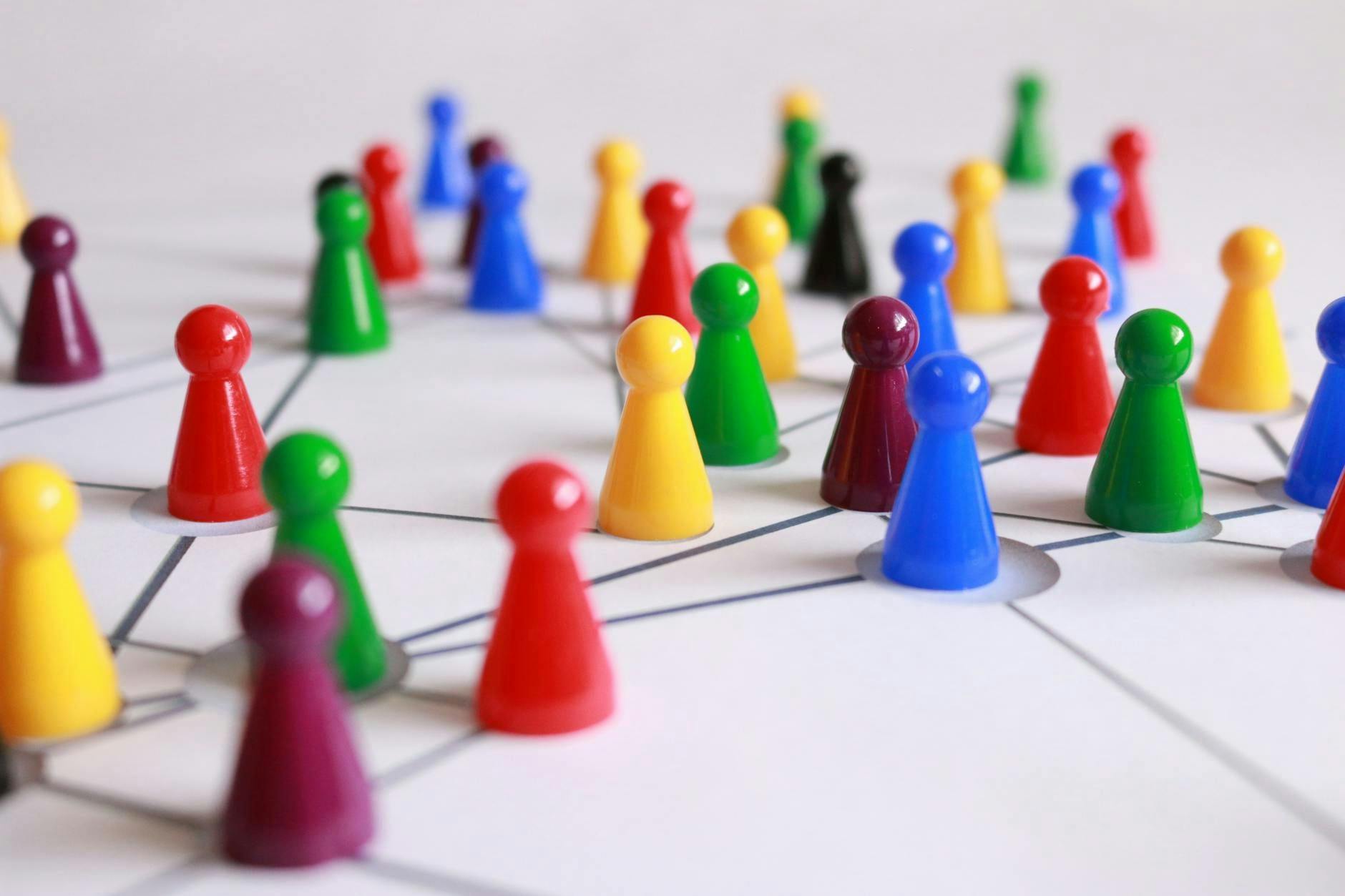Before each of his military campaigns, Napoleon always made a point of passing through Épernay, stopping at the cellars of his friend Jean-Rémy Moët [a French vintner who brought the champagne producers Moët & Chandon to fame] to pick up a supply of champagne.
“In victory you deserve it, in defeat you need it,” he said.
[… After Napoleon abdicated and Paris fell during the “War of the Sixth Coalition”]
Cellars throughout Champagne were plundered, the worst being those of Moët, which saw six hundred thousand bottles emptied by Russian soldiers camped on the premises. Moët, however, remained sanguine through the of it as he recalled an old French proverb: “Qui a bu, boira” (he who has drunk once will drink again).
Jean-Rémy was convinced, as he told friends, that “All of those soldiers who are ruining me today will make my fortune tomorrow. I’m letting them drink all they want. They will be hooked for life and become my best salesmen when they go back to their own country.”
He was right. During the Revolution, champagne had proved that it did not take sides, and it was no different this time. Leaders from every country France had fought against were soon trooping through the cellars of every champagne house, tasting and buying.
[…]
The most popular cellar was Jean-Rémy’s. He had worried about what Napoleon’s abdication and subsequent exile would mean for his business. Instead, he found that he had become “the most famous winemaker in the world,” supplying champagne to every European court.
Don Kladstrup , Petie Kladstrup – Champagne
Hard power and soft power are different approaches to influencing international relations. Hard power relies on tangible, direct means like military or economic force to achieve its objectives. Soft power, on the other hand, operates through intangible, indirect means like cultural appeal, governmental policies, or ideological alignment. Soft power can shape the preferences of others through appeal and attraction rather than coercion or payment.
In his article “Soft Power,” Joseph Nye defined soft power as the ability of a country “to get other countries want what it wants” as opposed to hard power, which can be described as “ordering others to do what it wants.” Hard power coerces, and soft power co-opts. With soft power, Nye explains, “the best propaganda is not propaganda,” as the Jean-Rémy Moët anecdote illustrates.
|
Aspect |
Hard Power |
Soft Power |
|---|---|---|
|
Definition |
Ability to influence others through coercion, force, or payment |
Ability to influence others through attraction and persuasion |
|
Mechanisms |
– Military deployment and threats |
– Governmental policies |
|
Outcomes |
– Compliance, often temporary |
– Voluntary alignment or agreement |
|
Implementation |
– Direct and immediate actions |
– Subtle, long-term strategies |
|
Limitations |
– Can be costly in resources and reputation |
– Less tangible and direct; outcomes not guaranteed |
|
Contextual Role |
– Effective in situations requiring immediate action |
– Effective in settings where cultural and ideological influence is valued |
|
Examples |
– Economic sanctions imposed by the United States |
– Hollywood movies |
Christmas is an interesting vector of projecting soft power, especially in recent decades. Christmas was influenced by American soft power and has become largely secular. As it nowadays emphasizes values of affection, family, generosity, and community, Christmas has become accessible to non-Western societies. The economic benefits of Christmas as a soft power are also significant, as festive attractions and tourism opportunities (Christmas markets, Lapland visits) attract visitors from different countries.
The progressive transformation and popularization of Christmas are closely tied to the iconic figure of Santa Claus. While Coca-Cola did not invent Santa Claus himself, the company played a pivotal role in shaping his widespread appeal and current appearance as a jolly character with rosy cheeks and a white beard. Santa has been adopted by many countries that did not traditionally have this character, leading to the supplanting of local Christmas traditions with the more Americanized version.
Moreover, Christmas enables nations to cultivate goodwill and promote positive international relations. Consider the annual gift of Christmas trees from Norway to the UK. The tree is a gesture of goodwill and gratitude from the Norwegian people to the British, commemorating the UK’s assistance to Norway during World War.
As both an intelligent example of soft power – and as a reminder of the close friendship between two allies at the North West of Europe, the annual gift of the tree remains a potent symbol of successful cultural diplomacy – not to mention Christmas cheer.
British Council – ‘Tusen Takk’ for the Christmas Tree!
The same factor could be used for both hard and soft power dynamics. Take economic influence. Hard power in economics involves tactics like imposing sanctions or supporting military strategies with money, whereas soft power in economics operates through partnerships, scholarships, or favorable governmental systems.
Consider the power of social media, a tool particularly suited to shape opinions, trends, and behaviors by facilitating the spread of content that appeals to its audiences. After all, unlike hard power tools like military force or economic sanctions, social media influences through engagement and content sharing, not through direct force or financial incentives. The impact of social media is often more subtle and long-term, as it can gradually shape cultural norms and public opinions.
Yet, social media has a dual nature, as it can also be used with hard power tactics such as propaganda and disinformation, censorship, surveillance, or cyber warfare attacks launched by state-sponsored hackers to disrupt communication networks, spread malware, and suppress dissent.
Soft power is a concept that can be applied to other social entities beyond states, as we can also have the idea of soft skills. Interestingly, the U.S. Army coined the term “soft skills” in the late 1960s as a broader category for the social skills required to lead, motivate, communicate, and work well with others, which, in the end, can win wars.
Read the following paragraph from a corporate or family perspective:
Hard power is deployed in the form of coercion: using force, the threat of force, economic sanctions, or inducements of payment. In contrast to the coercive nature of hard power, soft power describes the use of positive attraction and persuasion to achieve foreign policy objectives.
Soft Power 30 – What is Soft Power
Problem-solving, empathy, analytical reasoning, critical thinking, leadership, adaptability, teamwork, and efficient communication, all these transferable soft skills are crucial regardless of whether operating in a high-performance work setting or negotiating going-out rules with a 3-year-old.
Limitations of Soft Power
Soft power can arguably be important in the long term, as it is much less costly to assert economically and diplomatically. Nowadays, governments worldwide use soft power extensively, through the usual culture, political values, and foreign policy, but also through economic engagement, investments in small—and large-scale infrastructure projects, educational programs, or humanitarian aid.
However, what constitutes “attractive” soft power can vary significantly across countries and audiences. For example, within the same country, there might be attraction or repulsion towards the soft power display of another country.
Consequently, soft power is challenging to quantify and measure, because “attraction” often has a diffuse or indirect effect, creating general influence rather than producing an easily observable specific action. So, it is quite hard to assess soft power’s effectiveness and success compared to hard power, which focuses on measurable resources like money and military strength.
Soft power does not guarantee desired outcomes and sometimes, it can lead to negative consequences, as other countries can develop quicker, better, faster, and cheaper frameworks to influence other countries. The Industrial Revolution originated in Britain and later spread to other countries, including Germany and the United States.
While Britain pioneered industrialization, Germany and the U.S. adopted and enhanced British industrial practices, leading to significant manufacturing, technology, and economic growth advancements. Germany, for instance, excelled in chemical and electrical engineering, while the U.S. became a leader in mass production and innovation.
However, most countries with immense soft power have historically gained it through hard power (the United States, the United Kingdom, France, etc).
Also, hard power tools such as military force are considered more effective for specific national security objectives such as preventing attacks, policing borders, and protecting allies.
So, can soft power exist on its own? Hardly. Soft power will always be reliant on hard power. And so, it is often more effective when used in conjunction with hard power, as the two can reinforce each other.
Smart Power
Joseph Nye suggests the most effective approach to foreign policy in the twenty-first century is a mix of hard and soft power, also known as smart power.
“Smart power ” is a term I developed in 2003 to counter the misperception that soft power alone can produce effective foreign policy.
Joseph Nye – Get Smart
Smart power is neither purely hard nor purely soft power but a strategic combination of the two. The goal is not just power maximization or preserving hegemony but finding ways to successfully combine hard and soft power resources in the new context of power diffusion.
The Marshall Plan is a classic example, where the U.S. combined economic aid (soft power) with military presence (hard power) to rebuild and stabilize Europe.
However, effectively integrating hard and soft power can be challenging.
Smart power demands nuanced understanding and coordination among various government agencies. Otherwise, these different aspects of power can clash.
Also, managing perceptions is crucial. Maintaining the image of goodwill while exercising hard power can be difficult, as the coercive aspects of hard power might overshadow the benefits of soft power initiatives.
Seeing the world through the lenses of hard, soft, and smart power can be a valuable exercise in understanding a country’s history better. As a Romanian, I will focus on the union of Wallachia and Moldova in 1859, which laid the foundation for modern Romania. This unification was not achieved through soft power alone but involved a strategic blend of legal maneuvering, international support, and military actions.
The pivotal moment came in 1859 with Alexandru Ioan Cuza‘s double election as the ruling prince of Wallachia and Moldova, effectively uniting the two principalities despite only formal recognition coming later. The unionists cleverly leveraged ambiguities in the election resolution, which did not explicitly prevent the same individual from occupying both thrones simultaneously.
While the unionists drew on a growing sense of Romanian national identity and solidarity, this cultural and ideological soft power was insufficient. International support played a crucial role in the union’s success. Russia, Prussia, and Sardinia were key allies, and Napoleon III of France provided significant diplomatic backing.
This support was vital in countering opposition from Austria and managing the suspicion of Britain and the Ottoman Empire.
The union was further cemented through Romania’s subsequent wars of independence from the Ottoman Empire, establishing Romania as an independent nation.
While hard power may assert authority, it lacks the galvanizing effect of soft power. Soft power operates on a level of belief because many share the same goal, ultimately leading to greater influence on a global scale. And yet, there is only so much soft power can do on its own because there are few things more terrifying in this world than a pack of hungry wolves ripping through your borders.
Speak softly and carry a big stick; you will go far.
An aphorism often said by the 26th president of the United States, Theodore Roosevelt.
Notes:
SoftPower30 is an index that evaluates and ranks countries’ soft power capabilities globally by analyzing objective data across key categories.
Additionally, the index incorporates international polling data to capture subjective perceptions of a country’s soft power assets. The categories are:
- Government (measuring commitment to freedom, human rights, and democracy, as well as the quality of political institutions),
- Culture (assessing the global reach and appeal of a nation’s cultural outputs),
- Education (evaluating the level of human capital, contribution to scholarship, and attractiveness to international students),
- Global Engagement (examining the strength of a country’s diplomatic network and its global engagement efforts),
- Enterprise (looking at the attractiveness of a country’s economic model), and
- Digital (assessing a country’s digital infrastructure and capabilities).
The 2024 soft power index reveals some interesting aspects:
First, all 193 United Nations member states are ranked for the first time.
The USA and the UK are ranked top-name brands.
China is the fastest-growing this year, rising in the ranking from 5th to 3rd.
The United Arab Emirates, Saudi Arabia, Qatar, and Türkiye have seen the most significant improvement since the inception of the Global Soft Power Index in 2020.
Russia reaches an unprecedented low at 16th place, primarily due to negative perceptions surrounding its aggression against Ukraine.
Striving to maintain international support, Ukraine experienced a 7-rank decline to 44th place, although it remained higher in the ranking than preinvasion.
Israel’s soft power has declined significantly, down five ranks to an all-time low of 32nd following its invasion of Gaza.
Previously published at https://www.roxanamurariu.com/exploring-the-dynamics-of-soft-power/.











